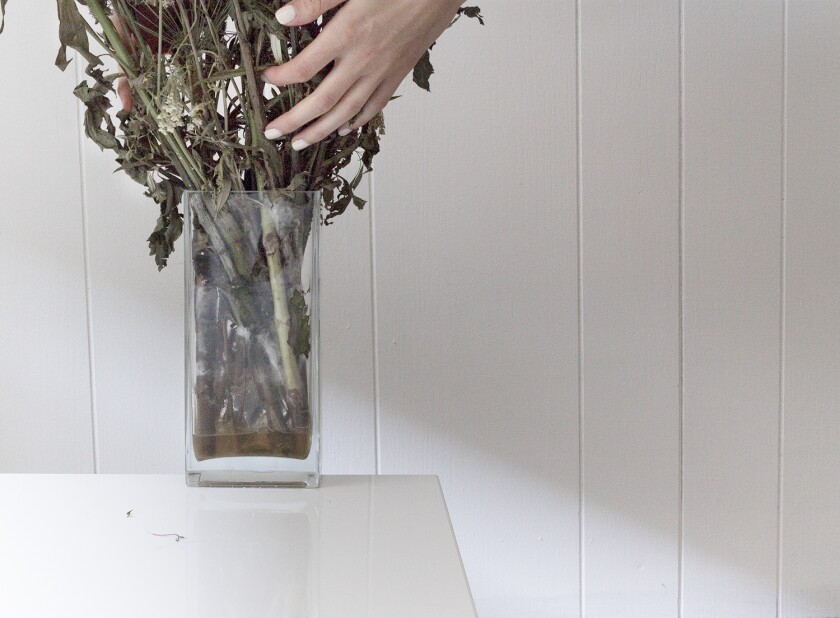Photographer Kendal Bryan seeks moments of quiet movement in her images
Sunlight streamed through a window inside Westminster Abbey, as if creating another dimension within the cathedral where Kendal Bryan stood. There were no walls between her and this second space; only an invisible line between light and dark, where she could slip easily between sunshine and shadow. It was calm, still, ethereal.
Sitting in the Abbey’s pews and encompassed by its imposing architecture, Bryan felt at home. The feeling evoked memories of time spent in her bedroom when she was growing up. As an introvert living an active, busy lifestyle, Bryan’s room was her sanctuary — a place to think, to meditate and to be alone. Sometimes she would just sit and watch the sun shift the shadows on the wall.
Now a photographer, Bryan strives to capture the same sense of stillness that she experienced in her childhood bedroom and in Westminster Abbey, in her photographs.

Quiet Movement
Bryan has been told by some people that her photographs are sad, but she considers “melancholy” or “serene” more appropriate descriptors. Despite the overall feeling of quiet conveyed in her images, Bryan is purposeful about including movement in her photographs.
“I try to make sure that the light creates some kind of space, like there is some kind of divide in the room, like a reflection, or the photo is cut into certain thirds, or a different angle in the room to make it look like something is shifting,” Bryan said. “I want to create some kind of motion for your mind so you don’t become bored.”
Human Touch
Before transitioning into photography, Bryan made a lot of paper cutouts. For her BFA final show, she hand cut squares into multiple sheets of plastic paint tarp and arranged them in layers. The result was a juxtaposition of geometric order and human imperfection. As she moved into camera work, she sought ways to incorporate a similar human touch, despite being more physically removed from the final artwork. “Most of my photographs have a human element in them,” Bryan said. “If the flowers are withering away, a human has been in that space. If it has a portion of my body, you can see that someone has been there and left a mark. It shows meaning or a story. It’s not just a space, but a space that has been touched.”
One obvious way that Bryan leaves her mark in her photos is by photographing herself or some part of her body, or even just her personal objects. She rarely takes pictures from the front though, and she never fully shows her face. Because of the personal nature of Bryan’s work, she does not use models. “I think all artists want to show their hand in their work somehow,” Bryan said. “For me, that was inserting myself into the photography. But it’s still anonymous — you can’t completely know that it’s me. It’s still sort of a mystery, so other people can relate or put themselves into the space.”
"Most of my photographs have a human element in them. If the flowers are withering away, a human has been in that space. If it has a portion of my body, you can see that someone has been there and left a mark. ... It's not just a space, but a space that has been touched."

Postpartum Art
Perhaps Bryan’s most personal body of work is her recent postpartum series, in which she seeks to document the overwhelming emotions that accompanied her new motherhood experience.
“I was trying to remember what it felt like,” said Bryan, who for months did not know how to go on with life, let alone keep making art. “I didn’t journal about it. I wanted to do something to document and go back to those days without having to write it all out. I wanted to at least communicate it emotionally and with a mood.” Although the images come from a dark place, Bryan made them with an intention of hope. “I still feel like they portray a sense of peace,” she said.
The photos were taken in the homes of two of Bryan’s friends, who she described as her “saving angels” after her son was born. Bryan’s history with her friends helped her feel a personal connection to their homes — something she believes led her to create powerful images.
Bryan’s artwork has changed in other ways since becoming a mother as well. With her son always by her side, she does not have as much flexibility in staging or manipulating photos as before, so she works with the space that she has — usually her apartment or somewhere outdoors. Many of her photos now include her son.

Teaching and Making
While pursuing her MFA at BYU, Bryan discovered a passion for teaching art at the university level. Directly following graduation in 2016, she moved with her husband to Reno, Nevada, where her husband attended medical school and she taught photography courses at the University of Nevada, Reno. Working with university students inspired Bryan to continue making her own art. A recent relocation to Virginia and other changes in her personal life have influenced Bryan’s work, and she is excited to see her art evolve again.
